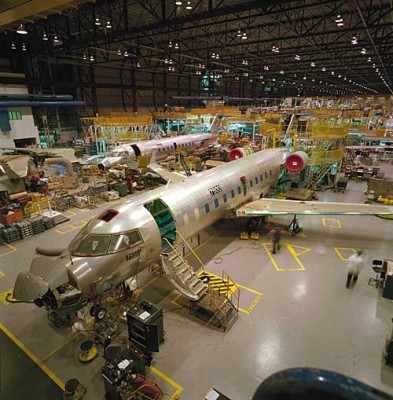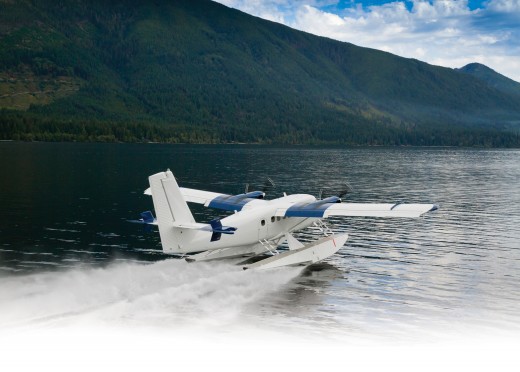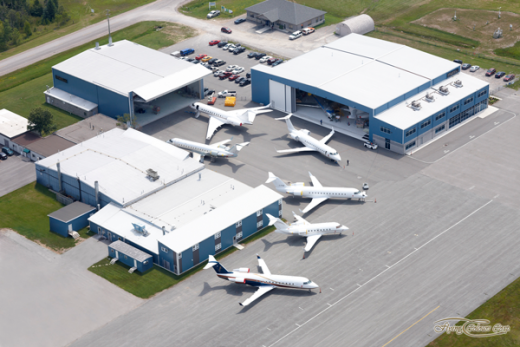 Scroll Down to see all of this week’s updates
Scroll Down to see all of this week’s updates
Air Canada Buys CSeries

Rendering: Flyaway Simulation
Bombardier has its first marquee customer for the CSeries but the circumstances of the deal with Air Canada appears to have been about more than airplanes.
The airline announced Wednesday that it will take at least 45 CS300 aircraft (the 150-seat version) and may buy another 30 aircraft, although some of those might be the 100-seat CS100.
The deal could be worth up to $3.8 billion and will take at least some financial and perceptual pressure off the company and its frontline product, which hasn’t recorded an order in more than a year.
Air Canada gets more than airplanes out of the deal. By committing to do heavy maintenance on the aircraft in Quebec (which is a major stakeholder in Bombardier now), the government has agreed to drop a lawsuit over Air Canada’s decision to close its maintenance division, which employed 2,600 people in Quebec.
The news was big enough to cause Transport Minister Marc Garneau to hold a news conference to extol the virtues of a deal that he later had to insist the federal government had no part of engineering. He told reporters there had been “no pressure” from Ottawa to convince Air Canada to buy the CSeries.
Nevertheless, Garneau seemed to be hitchhiking on the good news if not exactly taking credit for it and he certainly seemed well briefed on details of the complex deal.
Air Canada will start getting airplanes in 2017 and will replace the Embraer E75 and E90 aircraft it now uses on smaller routes with the Series. The purchase is part of a fleet renewal for the domestic and North American routes that also includes 61 Boeing 737 MAX airplanes.
Bombardier Trims Workforce

While the Air Canada order was a much-needed boost for Bombardier, there is a general downturn in several transportation sectors, including big business jets, and the company is making cuts.
About 7,000 jobs will be lost over the next two years, about 2830 of those in Canada. The rail division will absorb 3,200 of the cuts and the rest will be spread through various aviation sections, except the commercial aircraft division.
There will be 2,500 jobs cut from the aerostructures and engineering division, 800 from the aerospace product development group and 500 from the business jet business.
Meanwhile the federal government is staying coy about its possible contribution to the financial welfare of Bombardier. Navdeep Bains, the minister of innovation, science and economic development, said the government is still thinking it over, although it’s widely believed that any federal money is contingent on removing the Bombardier family from majority control of the company.
“We are continuing our dialogue with Bombardier on its request for federal assistance,” Bains said in a statement. “Any action the government takes with respect to Bombardier will be first and foremost in the interest of Canadians. We have been clear that such an important decision will only be made after due diligence, careful consideration and a strong business case.”
Bombardier announced the cuts in its fourth quarter report, which showed revenue was down to $18.2 billion in 2015 from $20.1 billion in 2014.
Pure Seaplane Version of Twin Otter

Viking Aircraft announced a water-only version of its 400 Series Twin Otter at the Singapore Airshow this week.
The current models are all interchangeable to wheels, skis or floats but the company said there’s a market for a big pure seaplane that can be offered for a lower price than its more versatile ancestor.
“The Viking 400S is specifically designed as an economical seaplane for commercial operation on short to medium flight segments, and will be offered at a list price under $6.0 Million (USD),” the company said in a news release from Singapore. “Adapted for quick turn-around between cycles, the 400S can achieve a breakeven load factor of around 8 passengers under typical operating conditions.”
The aircraft also adopts features and modifications designed to reduce maintenance requirements in the rigours of the marine environment.
“Corrosion resistant packages for the airframe, power plant, and fuel system have all been incorporated as standard equipment in the 400S, along with additional draining, sealing and prevalent use of corrosion-resistant materials throughout the aircraft,” the company said.
The standard model is intended for VFR operations with 17 passengers. An IFR upgrade, 19-passenger seating and a 15-passenger/cargo combi package are options.
The aircraft will be available in 2017.
Flying Colours Expanding

Increasing demand for the refurbishment of high-end business jets has prompted yet another expansion of Flying Colours Corporation’s Peterborough facilities.
The company is adding 6500 square feet to its cabinetry shop and will include downdraft finishing and painting tables that ensure a smooth, blemish-free finish on the woodwork.
“The intelligent design of the workshop has also enabled the use of skylight, and daylight lighting, to inspect the cabinetry components passing through the shop,” the company said in a news release.
The expansion will translate to shorter turnaround times for projects meaning aircraft will be back in service quicker.
A new customer reception centre that reflects the luxury of the products being purchased is also nearing completion. Company officials said a significant increase in business prompted the investment.
“We are seeing more work coming from a number of Bombardier Global projects, as well as a rise in the amount of mid to large size refurbishments coming through the doors,” said Sean Gillespie Executive Vice President.
